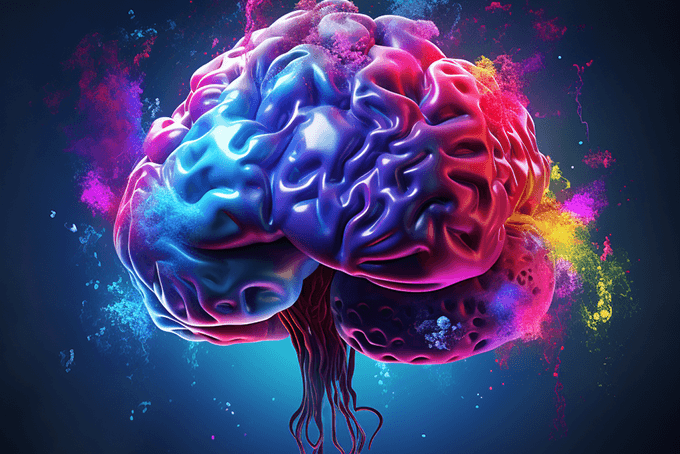A child’s brain is an amazing thing with areas in charge of logical thought, which may not seem to be used as often as parents (and teachers) would like, and also creativity. The brain is divided into two hemispheres – the right and the left. The left side of the brain is dominant over the right side of the body and the right over the left. This means left-handed individuals are thought to be right brain dominant, but it is not always the case. Before labeling a child as a right-brain learner, remember that the entire brain works together to create a complete human being, but many do have tendencies toward a specific half.
Right Brain Characteristics
When a child seems to excel in the creative arts, is excited about doing hands-on activities, and exploring and experimenting, he probably leans heavier on the right side of his brain than the left. Several developmental characteristics are often associated with right brain children such as higher levels of creativity and language skills. Along with these positive attributes, right brain dominant children are often thought to be unorganized and easily distracted.
A right brain dominant child may also be classified as a visual- spatial learner, which means his brain taps into learning through visual clues, he prefers information given all at once, and learns through doing not observing. Those long mathematical problems or activities that follow multi-step directions may cause a right-brained child to tune out. In a perfect world, children would be taught in ways most appropriate for their learning style, but with a majority of the population leaning toward being left-brain dominant, a more structured, linear, and goal-oriented way of education prevails. This causes many a teacher to feel a child isn’t able to perform as well as other children without realizing that it may have more to do with how the information is presented.
Learning with a Right Brained Child
Now that you have determined you have a right-brained child, what is the next step? There are simple ways to encourage your child to tap into both sides of his brain, which not only allows his dominant side to shine, but balances his whole being.
- Use your child’s creativity to help utilize his left-brain strengths. Most right brain dominant children enjoy learning through doing. Turn his next challenging math assignment into a creative experience by encouraging his brain to think in different ways. Spend time talking through the assignment with your child, or even act out his ideas, and have him take notes to help him remember details later. Not only will this help him stay on track, but encourage his linear left brain to work alongside his creative right.
- When your child is ready to get working, encourage him to work alone. Often right-brained children enjoy working with others, which may lead to wonderful and exciting learning opportunities within the classroom, but can take a child off-task when completing homework. Tap into his left-brain by giving him some quiet space to focus on the task at hand. When a task is completed, celebrate with an engrossing and engaging game or activity that your child enjoys as a reward for his hard work.
- Use your child’s visual brain to its best by encouraging his learning through using color. For instance, when studying for an upcoming spelling test offer your child a pre-test and then focus on the words he has trouble spelling. The HSLDA (Home Schooling Legal Defense Association) suggest writing out the misspelled words on cards, with the letters that are incorrect in a different color. For instance, if your child writes Saturday as “Saterday” write the correct letters in black and the incorrect “e” as a “u” but in red. Help your child make the flash cards together to encourage his left and right brain to work together.
- Take your time, and encourage your child to do the same. Visual-spatial learners do not work well under pressure. Although, in most cases, school tests are timed, while at home, offer your child as much time as he needs to get his work done. If your child seems to be challenged with an activity, encourage him to draw a picture or create chart to show how he visualizes the activity. Offer assistance and encouragement without judgment or getting frustrated if things are taking a bit longer than desired.
- When in the classroom, offer the right-brain dominant child lots of opportunities for visual learning, which means including charts in lectures and visuals when discussing an assignment, such as pictures of birds when learning about migration. All children enjoy looking at visuals when learning, so including additional images as often as possible only aides in everyone’s learning.
Having a right brained dominant child may seem like a roller coaster at times, with moments of total excitement and crashes with great disappointments. Working alongside your child is key, no matter his learning style, which encourages positive learning for years to come.



